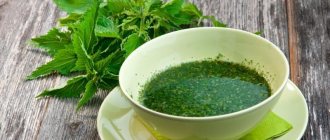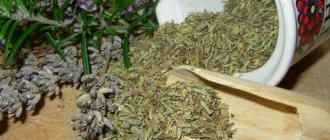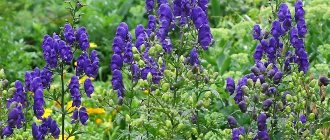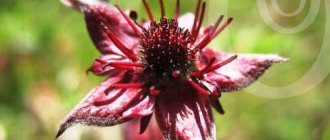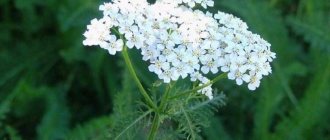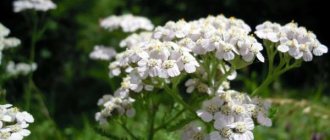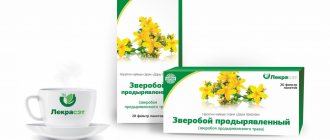The plant world is in many ways an incompletely studied area of science. It is not surprising that we will continue to learn about the beneficial properties of some plants. For example, do you know such a plant as erva woolly or floor pala - a herb whose use is found mainly in urology. For many it is something exotic, completely unknown. Read about what kind of plant this is, why herbal medicine based on it can be effective for the kidneys, and how to make medicine from pollen yourself in our article.
Pharmacological properties
Erva woolly grass contains flavonoids, polysaccharides, mucus, organic acids, tannins, coumarins, and saponins. this complex of biologically active substances has a diuretic, salt-removing, antispasmodic, anti-inflammatory, and antiseptic effect. preparations from the herb erva woolly promote the dissolution and removal of kidney stones, rapid relief of inflammatory processes in the urinary tract, reduce the urea content in the blood serum, increase the excretion of sodium ions and, to a lesser extent, potassium.
Chemical composition
It was the chemical composition of the plant that made scientists pay attention to it: there are a lot of useful components in this nondescript grass.
Found in the plant:
- potassium - helps reduce carbon dioxide levels in the blood, stabilize the water-salt balance, normalize pressure in the arteries, control muscle contraction;
- calcium – controls the passage of nerve impulses, forms (among other elements) bone tissue, maintains normal metabolism, has a beneficial effect on blood clotting, strengthens blood vessels and the immune system;
- phenolic acids - can neutralize pathogenic bacteria, speed up tissue regeneration after injuries, relieve pain, slow down the formation of ulcers;
- alkaloids – normalize blood flow, help stop bleeding, relieve pain and spasms;
- flavonoids - calm the central nervous system, resist free radicals, make vascular walls stronger, promote the effective functioning of the adrenal cortex, control heart rhythm;
- pectins - help remove toxins, metabolism and even reduce the level of “bad” cholesterol;
- amino acids – regulate vascular tone, help reduce it, thereby stabilizing blood pressure, increase the level of hemoglobin in the biofluid, and promote the evacuation of bile clots;
- inorganic salts – accelerate tissue healing;
- alkanes – envelop, heal wounds.
Erva woolly, the benefits and harms of which are described in this material, is known for the gentle removal of kidney stones. However, this is not its only medicinal effect.
Application
Place 5 g (2 tablespoons) of herbs in an enamel bowl, pour in 200 ml (1 glass) of hot boiled water, cover with a lid and leave in a boiling water bath for 15 minutes. cool at room temperature for 45 minutes, filter, squeeze out the remainder into the strained infusion. The volume of infusion is adjusted to 200 ml with boiled water. adults take 1/4-1/2 cup warm 2-3 times a day 15-20 minutes before meals. children aged 12–14 years, 1 tablespoon; over 14 years, 2 tablespoons 2–3 times a day, 15–20 minutes before meals. the course of treatment is 10–30 days, it is recommended to carry out 2–3 courses per year. Shake the infusion before use.
Contraindications and side effects
Erva woolly has many positive properties, but this herbal medicine is not without contraindications. There are physiological contraindications - pregnancy, childhood (up to 12 years), lactation, individual intolerance.
Among the pathological contraindications:
- rickets;
- osteoporosis;
- allergy;
- hypoparathyroidism;
- renal osteodystrophy.
A side effect of the floor is softening of the enamel on the teeth. But this negative point can be mitigated: it is recommended to drink decoctions and infusions through a straw. Before using the medicine, consultation with a specialist is necessary.
Note!
The description of the drug Pol-pal herb 50g on this page is a simplified author’s version of the apteka911 website, created on the basis of the instructions for use.
Before purchasing or using the drug, you should consult your doctor and read the manufacturer's original instructions (attached to each package of the drug). Information about the drug is provided for informational purposes only and should not be used as a guide to self-medication. Only a doctor can decide to prescribe the drug, as well as determine the dose and methods of its use.
Botanical description of Erva woolly
Paul fella and erva woolly are the same plant. The biennial belongs to the Amaranth family. In the wild, the branched bush grows in humid subtropics. Ceylon is considered the birthplace of the plant; today it is cultivated in Ukraine and Georgia.
Erva has a taproot system, a grayish main root and lateral branches. The stems of the erva are rich green, very branched, both creeping and erect (can be different). The grass has elliptical leaves, some leaves can even be called round. They are about 2 cm long and slightly less wide. The flowers are small and inconspicuous with a cream perianth. Flowers form spike-shaped inflorescences.
The herbaceous plant bears fruit, its fruits look like boxes with a long spout. Leaves, seeds, root parts and stems of the plant are used as medicinal raw materials. If you buy the medicine at the pharmacy, it is presented there as mixed raw materials. If you collect the grass yourself, you need to do it in October, at the time of fruiting. Then the erva grows up to 40 cm.
It is recommended to store the collected raw materials in fabric bags in a dry and cool place. The plant should not be stored for longer than three years; it will no longer demonstrate its medicinal properties.
Reviews
Erva woolly for kidney stones – reviews:
Larisa: I encountered urolithiasis at the age of 30. Before this, I had actually never taken pills. And the doctor told me that since the kidney stones are urate and few in number, I can take herbal medicine. So I started drinking half a glass. I took the first course using homemade medicine and made decoctions. Then she started taking pharmaceutical medicine. And the problem went away. An ultrasound scan a year apart showed excellent dynamics.
Valeria: I have had kidney problems since I was young. During my first pregnancy (22 years old), pyelonephritis “happened.” And after pregnancy, it suddenly appeared again a year later. And then the doctor said that the stones would soon manifest themselves, and prescribed woolly erva. This is a good remedy, I say without a doubt. But then I was 24 years old, I could experiment with dosages, which is why Erva showed its negative properties - I started having problems with my teeth. I can confidently say: you can be treated with Erva, but you also need to remember about its harmful effects and not exceed doses, drink strictly through a straw.
Indications
Erva woolly is widely used in urology, nephrology, therapy, and cardiology. The following diseases are indicated for its use:
- Chronic pyelonephritis and glomerulonephritis;
- Acute and chronic inflammation of the bladder wall (cystitis);
- Hepatitis and cirrhosis of the liver;
- Some gynecological diseases (uterine fibroids, menstrual irregularities);
- Arthritis of various etiologies, accompanied by pain;
- Diseases of the upper and lower respiratory tract (tracheitis, laryngitis, bronchitis, lobar pneumonia);
- Gastritis and stomach ulcers during periods of calm;
- Decreased immunity and for the prevention of viral diseases (ARVI, acute respiratory infections).
What kind of Pol-Pala grass is this?
Erva woolly (Pol-Pala) - from the Amaranth family, was brought from the tropical island of Ceylon to the European continent. Until now, in the field of medicine, its first name is most often used, leaving the second to botanists. Currently, woolly erva is successfully cultivated in Russia.
In 1992, half the plant was added to the official register of medicinal plants of the country. Instructions for its use are approved by the Ministry of Health of the Russian Federation.
Pol-palu is valued not for its beauty, but for its unique healing qualities. The composition of woolly erva allows it to be used effectively for many diseases.
Erva woolly has the following properties:
- Diuretic.
- Stone-removing.
- Stone-dissolving.
- Choleretic.
- Salt-removing.
- Anti-inflammatory.
- Antiseptic.
- Wound healing.
- General strengthening.
- Hypoazotemic (reducing the amount of ammonia in the blood).
Despite the diuretic effect, it maintains a normal electrolyte balance of potassium and is excreted from the body in very limited quantities. In this regard, an analogy can be drawn with the effect of modern potassium-sparing diuretics.
This biennial plant cannot boast of any special decorative properties. It has a long, up to 140 cm, actively branching stem, which can be either erect or spread along the ground. In July, small, unremarkable white or greenish flowers appear, grouped in spike-shaped inflorescences. Blooms before the onset of cold weather. In greenhouse conditions, flowering lasts all year round. The small fruits have a characteristic elongated spout.
Latin name: AERVAE LANATAE HERBA
ATX code: C03X
Manufacturer: Apex, Start-Fito LLC, Krasnogorsk plant LRS (Russia)
Price from: 60 rub.
Content:
Collection and preparation of grass
Soleros grass: description, properties and application
To have a supply of herbs (it can be stored in dried form for about 3 years), you need to wait until autumn. It is during this period that the pala stops growing. And at the end of August flowers appear on it. Woolly erva is removed from the garden along with the roots. There is no need to pull the plant, it is better to dig it up. Then you need to wash the crop from lumps of earth. The stems are cut into pieces that will be convenient to store.
Dry grass
Dry the raw materials in a dry, well-ventilated area. Some farmers try to carry out this operation in an oven or stove. This is not recommended, since excess heat causes beneficial components to evaporate from the stem and leaves. The herb should be stored in a dry place where the rays of the sun do not penetrate.
A gardener who decides to grow erva must have a greenhouse. If you simply plant seedlings in the garden, due to insufficient temperature and air humidity, the weed will not acquire the necessary medicinal elements. Therefore, you need to follow all the advice of experts on growing subtropical plants in the climatic conditions of Russia.
0 0 votes
Article rating
The harm is half done
It should be noted that, despite all the medicinal properties, taking half-palm can have negative consequences:
- a decoction of the plant can thin tooth enamel;
- there are frequent cases of allergic rashes and swelling to various components of the plant;
- In case of an overdose, nausea, vomiting, and dehydration are possible.
When treating with chemicals, especially diuretics, it is recommended to drink half a dozen decoctions of raw materials under the close supervision of a specialist, since an enhancing or inhibitory effect is possible.
Diseases and pests
Milk thistle herb: description, properties and application
Like all plants, fallen grass is susceptible to attack by garden parasites. The most dangerous of them are the following insects:
- spider mites;
- green aphids;
- weevils;
- slobbering pennies;
- ants;
- caterpillars of various butterflies;
- mole crickets;
- slugs.
They destroy leaves, shoots, flowers. But you can get rid of them:
- To combat spider mites, modern drugs are used that kill this pest.
- Green aphids are eliminated using a soap solution sprayed onto the plantings. To protect against it, you can plant thyme next to the erva.
- The weevils are simply shaken off the plant, then collected and burned. If there are a lot of them, then the bushes need to be treated with an infusion of pepper or a solution of potassium permanganate.
- The slobbering penthum is removed from the stems with a stream of water from a hose.
- Ants and caterpillars are most easily poisoned with special preparations.
- To scare away mole crickets, it is recommended to loosen the soil under the plants.
- Slugs are driven away by scattering wood ash near the roots of the grass and treating the stems with an aqueous solution of this substance.
Erva can die from spring frosts if its seedlings are not protected with warm material.
Although the weed is resistant to fungal diseases, it is most often affected by powdery mildew. To combat the disease, you must constantly clear the garden of plant debris.
Gray mold affects both trunks and leaves on bushes. To eliminate the problem, you need to spray the plantings with Bordeaux mixture.
To combat the disease, you must constantly clear the garden of plant debris.
If a coating similar to fine soot has formed on the plant, all affected parts must be quickly removed, and then the erva should be treated with preparations containing copper.
If signs of rust appear on the grass, to combat it you need to eliminate the affected areas and then spray the plantings with fungicides.
If the soil is very wet or contains a lot of acid, blackleg may appear. To eliminate the danger, it is necessary to deoxidize the soil and treat the lower parts of the grass with wood ash.
When symptoms of any viral disease appear, systematic weeding of the soil is recommended. There are no cures for such lesions, so it is necessary to eliminate the carriers of the infection - various insects.
Important! It is worth choosing healthy seeds or seedlings for sowing or strengthening them with the help of immune stimulants.
